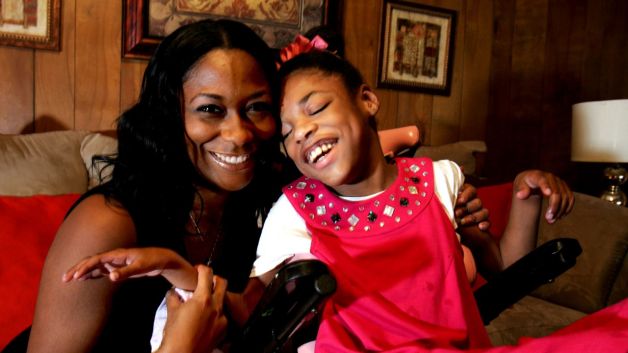Cerebral Palsy (CP) is a neurological disorder that affects movement and muscle coordination, causing physical disabilities. Parenting a child with Cerebral Palsy comes with unique challenges, but with the right knowledge and support, you can create a nurturing environment to help your child thrive. In this article, we will explore valuable tips and strategies for raising a child with Cerebral Palsy.
Understanding Cerebral Palsy:
To provide the best care for your child, it’s crucial to have a comprehensive understanding of cerebral palsy. cerebral palsy is caused by brain damage or abnormal brain development, typically occurring before or during birth resulting in a birth injury. It affects muscle control, balance, and coordination, leading to mobility limitations and other associated challenges.
Seek Expert Medical Advice:
Consulting with medical professionals who specialize in cerebral palsy is vital for your child’s well-being. These experts can offer valuable insights, treatment options, and guidance tailored to your child’s specific needs. Neurologists, physical therapists, and occupational therapists can all contribute to creating an effective care plan.
Early Intervention:
Early intervention plays a crucial role in managing Cerebral Palsy. The earlier you identify and address developmental delays or concerns, the better outcomes you can achieve for your child. Engage in regular developmental screenings and seek therapies that promote motor skills, speech, and cognitive development.
Adaptive Equipment and Assistive Technology:
Incorporating adaptive equipment and assistive technology can significantly improve your child’s independence and quality of life. These tools can include mobility aids like walkers or wheelchairs, communication devices, specialized feeding equipment, and modified computer interfaces. Work with therapists to determine the most suitable options for your child.
Foster an Inclusive Environment:
Creating an inclusive environment is essential for your child’s social and emotional well-being. Encourage open conversations about Cerebral Palsy with family, friends, and classmates, promoting acceptance and understanding. Teach your child to advocate for themselves, and educate others about Cerebral Palsy to reduce misconceptions and stereotypes.
Support Networks:
Building a strong support network is crucial for both you and your child. Connect with other parents of children with Cerebral Palsy through support groups, online communities, or local organizations. Sharing experiences, challenges, and resources can provide emotional support and practical advice.
Individualized Education Plans (IEPs):
Collaborate with your child’s school to develop an individualized education plan (IEP). This plan outlines specific educational goals, accommodations, and support services tailored to your child’s needs. Regular communication with teachers and therapists will ensure your child receives the necessary assistance to succeed academically.
Focus on Abilities and Encourage Independence:
While acknowledging the challenges Cerebral Palsy presents, it is important to focus on your child’s abilities and strengths. Encourage independence by involving your child in daily activities and decision-making processes. Celebrate achievements and provide opportunities for your child to explore their interests and talents.
Take Care of Yourself:
Parenting a child with Cerebral Palsy requires significant physical and emotional energy. It is crucial to prioritize self-care to avoid burnout. Seek support from friends, family, or professional therapists to help you manage stress and emotional well-being. Remember that taking care of yourself enables you to be a better caregiver for your child.
Celebrate Progress and Embrace Optimism:
As a parent, it’s important to celebrate every milestone and progress your child makes. Whether it’s a small improvement in motor skills or a breakthrough in communication, acknowledging and praising their efforts can boost their confidence and motivation. Embracing optimism creates a positive mindset for both you and your child, fostering a supportive environment that encourages growth and resilience.
Nurturing Physical and Emotional Health:
To support your child’s overall well-being, prioritize their physical and emotional health. Ensure they have a nutritious diet and engage in regular physical activities appropriate for their abilities. Physical therapy exercises can help improve muscle strength, flexibility, and coordination. Additionally, addressing their emotional needs is crucial. Encourage open communication, provide emotional support, and consider therapy options that focus on mental health and coping strategies.
Creating an Accessible Home Environment:
Adapting your home to be accessible and safe is essential for your child’s comfort and independence. Consider installing ramps or handrails for easy mobility, modifying bathrooms to accommodate their specific needs, and removing potential hazards. Organize the living space in a way that allows your child to navigate freely and access their belongings easily. Creating a home environment that promotes accessibility will contribute to your child’s overall well-being.
Encouraging Social Engagement and Inclusion:
Social interaction plays a vital role in your child’s development and happiness. Encourage social engagement by arranging playdates, joining inclusive community programs, or participating in activities tailored to children with disabilities. Educate your child’s peers, teachers, and the wider community about Cerebral Palsy to foster inclusion and acceptance. By promoting social connections, you help your child build relationships and develop essential social skills.
Conclusion:
Raising a child with Cerebral Palsy requires dedication, knowledge, and a supportive environment. By understanding cerebral palsy, seeking expert advice, and embracing early intervention, you can provide the best possible care for your child. Remember to focus on their abilities, foster independence, and create an inclusive environment that celebrates progress. Nurturing their physical and emotional health, adapting your home for accessibility, and encouraging social engagement are vital aspects of their overall development. With your love, support, and the right strategies, you can help your child with Cerebral Palsy thrive and reach their full potential.

